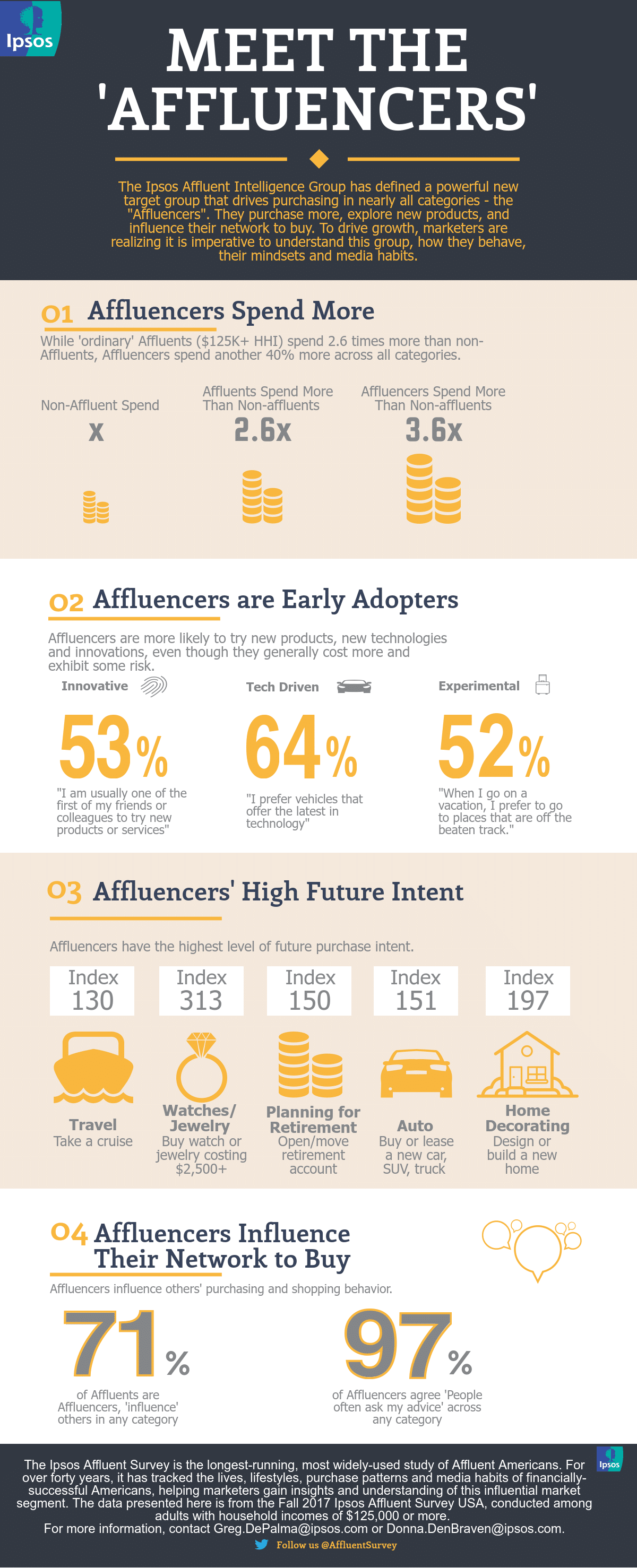Influencers have more clout than ever with consumers, and new research from market research firm Ipsos identifies an emerging and incredibly powerful subgroup—the cluster of influencers who also happen to be loaded with cash.
This sector, known as Affluencers—a grouping of affluent consumers who also influence others’ shopping and buying behaviors—represents 71 percent of all affluents, according to the newly released Fall 2017 Ipsos Affluent Survey.
“While most marketers have understood that the affluent audience is important due to their buying power and purchase behaviors especially in luxury and high-ticket categories, we’ve found that their influence is felt in nearly every category,” said Michael Baer, SVP and head of the Affluent Intelligence Group at Ipsos Connect, in a news release.
Marketers are becoming more and more interested in reaching out to and engaging influencers—not only for their consumer clout, but also in part because of factors like media fragmentation, quality and transparency issues of the media supply chain, and the rise of ad blockers. Thus, the idea of reaching a targeted group of people who are particularly powerful and influential is spreading.
This is why the identification of Affluencers is so important—this target has the potential to not only represent a disproportionate amount of purchases, they also represent a group that is sought after for their advice and purchasing input across all categories.
In addition, the research found that Affluencers on average consume more media than general affluents, with both print and digital publications up +9 percent.
The survey defines “affluent” as adults living in households with at least $125,000 in annual household income, a group that reflects the top 16 percent of American households.
The Fall 2017 study is based on 22,449 online interviews conducted between June 2016 and June 2017 among U.S. adults (18+) living in households with at least $125,000 in annual household income. The survey uses rigorous methodologies, including weighting to Census estimates, to ensure the results are projectable to the population of America’s 58 million Affluent adults. The maximum margin of error is ±0.8 percentage points in the total sample.




